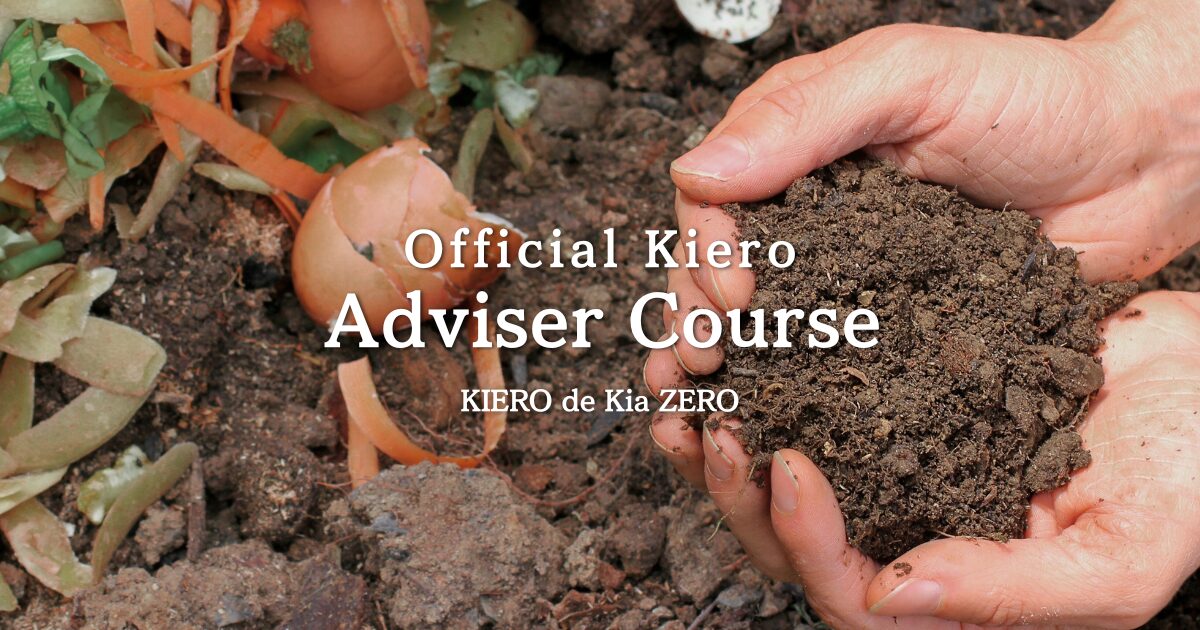I’m Mariko, a permaculturalist, sharing my thoughts on “playing, living, working and studying” from New Zealand!
I’ve mentioned Kiero a few times on this blog. (They’re also for sale from here.)
I have recently taken the Kiero Official Advisor Certification Course and am currently preparing to become an official member of the team.
And then yesterday, the first lecture, something I had been looking forward to since signing up, took place.
From now on, I will learn the correct way to use Kiero and how to communicate it properly, and I will do my best to spread it in New Zealand!
If anyone in New Zealand would like to help, we’d love to hear from you!
Get rid of trash! What is the zero-waste box Kiero?
I started using Kiero three years ago. At the time, Kiero hadn’t even been registered as a trademark, and I remember that it could be anything, as long as you put soil in a box and mixed it with food waste, and it was called “Kiero.”
This is because the Inventor Nobuo Matsumoto, did not even give the box a name at first, and it took repeated improvements to arrive at its current shape.
Kiero began around 1995. At the time, Mr.Matsumoto simply dumped food waste on top of gathered leaves in a corner of their garden. He had no intention of making compost then.
However, he thought , “I want to get rid of this unpleasant food waste as soon as possible. I should just apply heat to it,” so He simply placed a transparent corrugated sheet that he had at home on top of the dead leaves.
At the time, it was just a mysterious phenomenon where food waste disappeared, but if you think about it, it was the power of microorganisms that caused the natural decomposition of food waste and it disappeared.
This is the origin of Kiero.
The name “Kiero” is now trademarked and the definition of Kiero has been established.
Now, Kiero officially means,
“It has a transparent lid that lets sunlight in and a triangular gap on the side that lets air in.” “It can hold more than 30 liters of soil.”
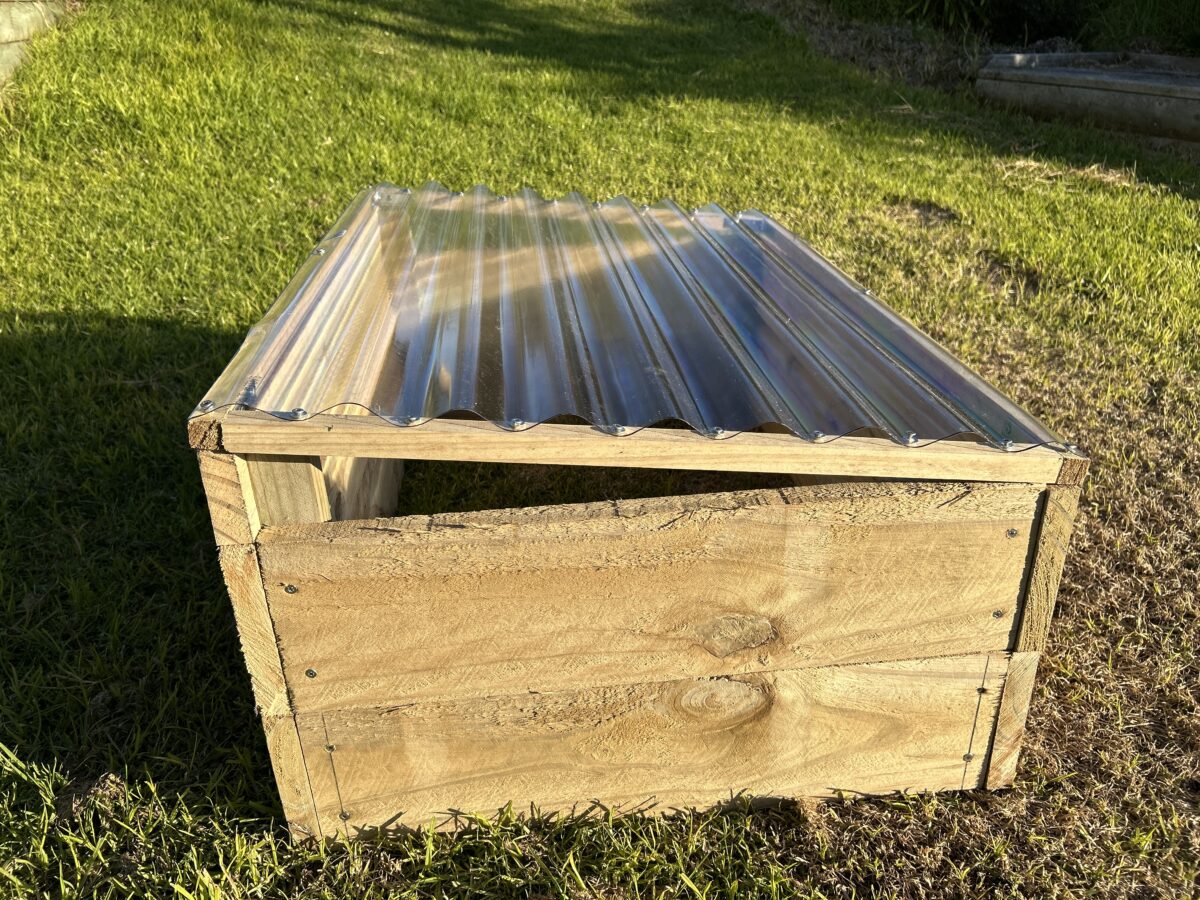
Our Kiero de Kia ZERO was made to Official Kiero standards!
In New Zealand, materials are more expensive than in Japan, so the design is lean and efficient. For that reason, it is slightly smaller than the official Kiero. There is also a transparent corrugated roof installed on the side, but this is installed to protect from rain, so as long as the rain does not get inside, it is fine to have it on horizontally.
You can purchase it here (New Zealand Only )
Two types: A ground and A balcony type
The ground type has no bottom and is simply placed on the ground and filled with soil.
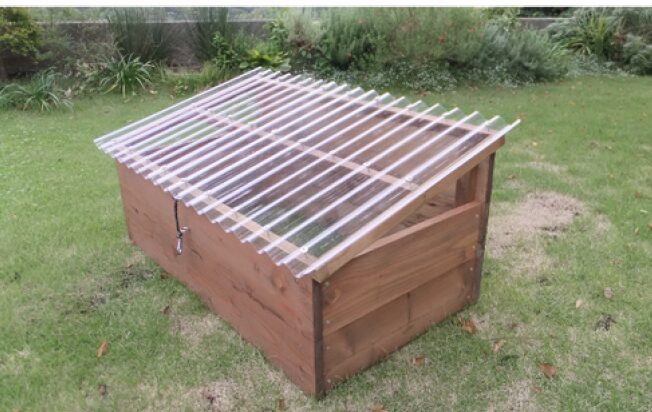
Photo: Ground type Source: Kiero official site.
The balcony type with a bottom was created in response to a request from someone whose property had no soil or was covered with concrete.
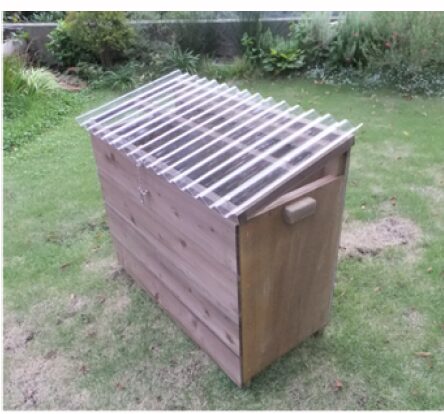
Photo: Balcony type Source: Kiero official
The effectiveness of the Kiero is proportional to the amount of soil, so the more soil there is, the better the processing capacity.
By definition, the balcony type is necessarily tall.
However, the soil in the bottom half is apparently there to absorb water rather than for microorganisms.
There are also a miniature Kiero that use plastic clothing cases, but
plastic deteriorates easily and there is a concern that it may become microplastic, so it is best to avoid using them for long periods of time.
About the soil to put in Kiero
It is recommended to use black soil for the Kiero.
However, even though it is black soil, the quality of the soil varies depending on where you live.
According to the official Kiiero, the “black soil” they refer to is Japanese Kanto district loam soil.
Kanto District Loam is a stratum formed by the accumulation of volcanic ash that spreads across the Kanto Plain, and is soil that is not suitable for cultivation.
If you live outside of the Kanto region, black soil is difficult to obtain, so the next best soil for the Kiero is vegetable garden soil, which is a soil that is easy for microorganisms to live in.
Conversely, sand and clay soils are not suitable for Kiero because they are difficult environments for microorganisms to live in.
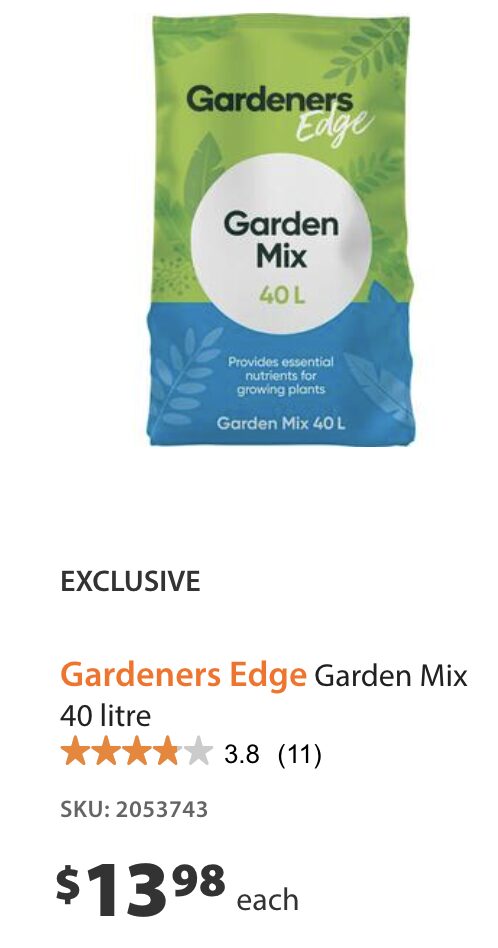
In recent years, some people have also started using “bamboo chips” and “waste mushroom beds.” These are rich in lactic acid bacteria and other microorganisms, and can decompose food waste. However, it seems that you need to be creative in how you use them.
Research has revealed many things about the relationship between soil made with Kiero and microorganisms.
There will likely be new reports soon!
Why doesn’t Kiero’s soil grow?
Kiero works similarly to compost, but the unique feature of Kiero is that the soil volume does not increase .
In fact, the first question many people have is, “Why doesn’t it increase?”
It’s difficult to explain, so I asked an AI.

Kiero is a system in which microorganisms eat everything up and return it to the soil,
While compost is a system in which the waste decomposes and remains as compost (organic matter)
The objectives are different, so the goals are different. That is the difference between “not increasing” and “increasing.”
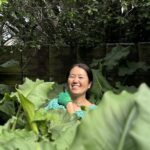
What does that mean?
In Kiero’s soil, microorganisms break down food waste into carbon dioxide, water, and heat , returning it to the air and water at a molecular level. On the other hand, composting is stopped “midway (at the compost stage),” so the amount of soil increases as a result.
In other words,
- Composting = Partially decomposed → left as material
- Kiero = decomposes completely → no shape remains
The purpose of composting is to “make soil (compost).”
Kiero works by “feeding the soil (microorganisms) and digesting them.”

The objectives are different, so the results are different.
About moisture
For Kiero, it is also important to pay attention to the moisture content of the soil.
If there is a lot of moisture, decomposition will be quick, but if water accumulates, the soil will be prone to rot.
Conversely, if the soil is too dry, microorganisms will not be able to live there and decomposition will not occur.
However, there’s no need to think too hard about it. Kitchen waste (including soup and oil) contains plenty of moisture, so if you just throw it into the Kiero properly, the microorganisms will be happy to break it down properly. (If it’s a little dry, you’ll need to water it.)
In fact, food waste contains a lot of water, so it is natural to return it to the soil.
In Japan, the food waste is incinerated as burnable waste, which uses a lot of fuel and produces carbon dioxide (a greenhouse gas).
On the other hand, in New Zealand, most waste is dumped in landfills, where it does not decompose and produces greenhouse gases (methane).
It has been pointed out that an increase in greenhouse gases will lead to an increase in the average global temperature.
Kiero uses the power of soil microorganisms to naturally decompose food waste, reducing the cost of garbage collection and fuel consumption. In other words, it is an environmentally friendly. Kiero improves our environment for the future .
An Official Kiero advisor in New Zealand to be.
I wanted to introduce Kiero to New Zealand, However, home composting is common in New Zealand.
I wondered if it was really necessary in New Zealand, where composting is so popular. In fact, I use compost and bokashi to make compost. And now that I’ve started raising chickens, my household has zero food waste.
However, the reality is…
According to the Ministry for the Environment in 2023, the total amount of waste in New Zealand is estimated to be approximately 17.6 million tonnes , of which 12.59 million tonnes was sent to landfills and other disposal sites.
Furthermore, it is expected that the current landfill sites will reach full capacity in just a few years, which has become a major social issue across the nation.
In fact, most of the waste that ends up in landfills can be reused and turned into materials if it is properly sorted.
The food waste generated at home can be returned to nature at home with Kiero. Some may say that it sounds hard. It may seem a bit time-consuming compare to throw them in the bin. But, No! It’s not hard at all!
And above all, Kiero allows you to experience with your own eyes the cycle of nature and the circulation of life.
I don’t just want to make and sell Kiero, I want to share the joy and satisfaction of recycling food waste effortlessly in your daily life.
Being an official advisor is like building a bridge between people and nature . I feel it is the perfect job for me, as I aim to live and work in a permaculture lifestyle.
I would like to use my experience in New Zealand and my connections with Japan to spread the word about the benefits of Kiero.
That’s my wish.
———————————————————————-
